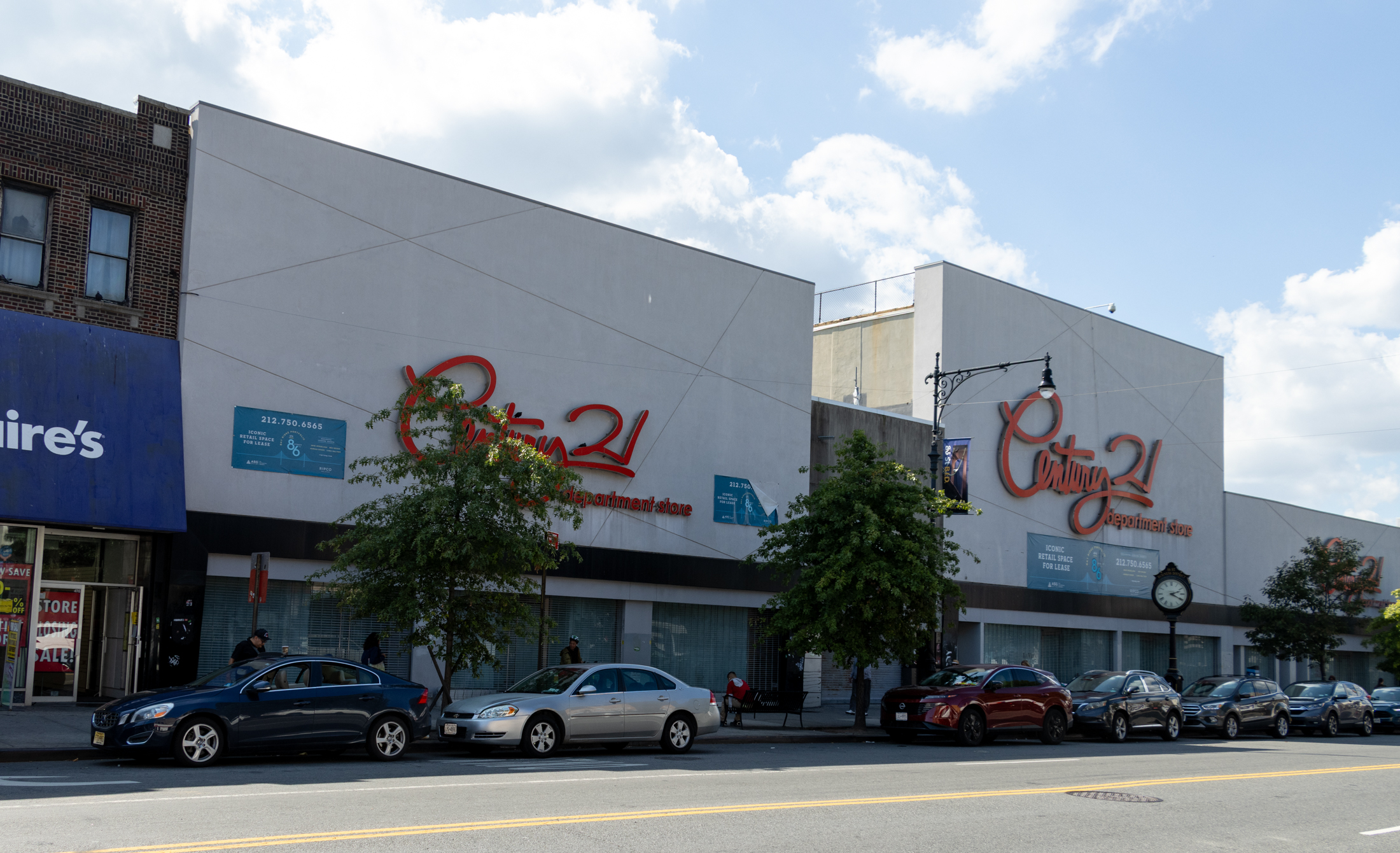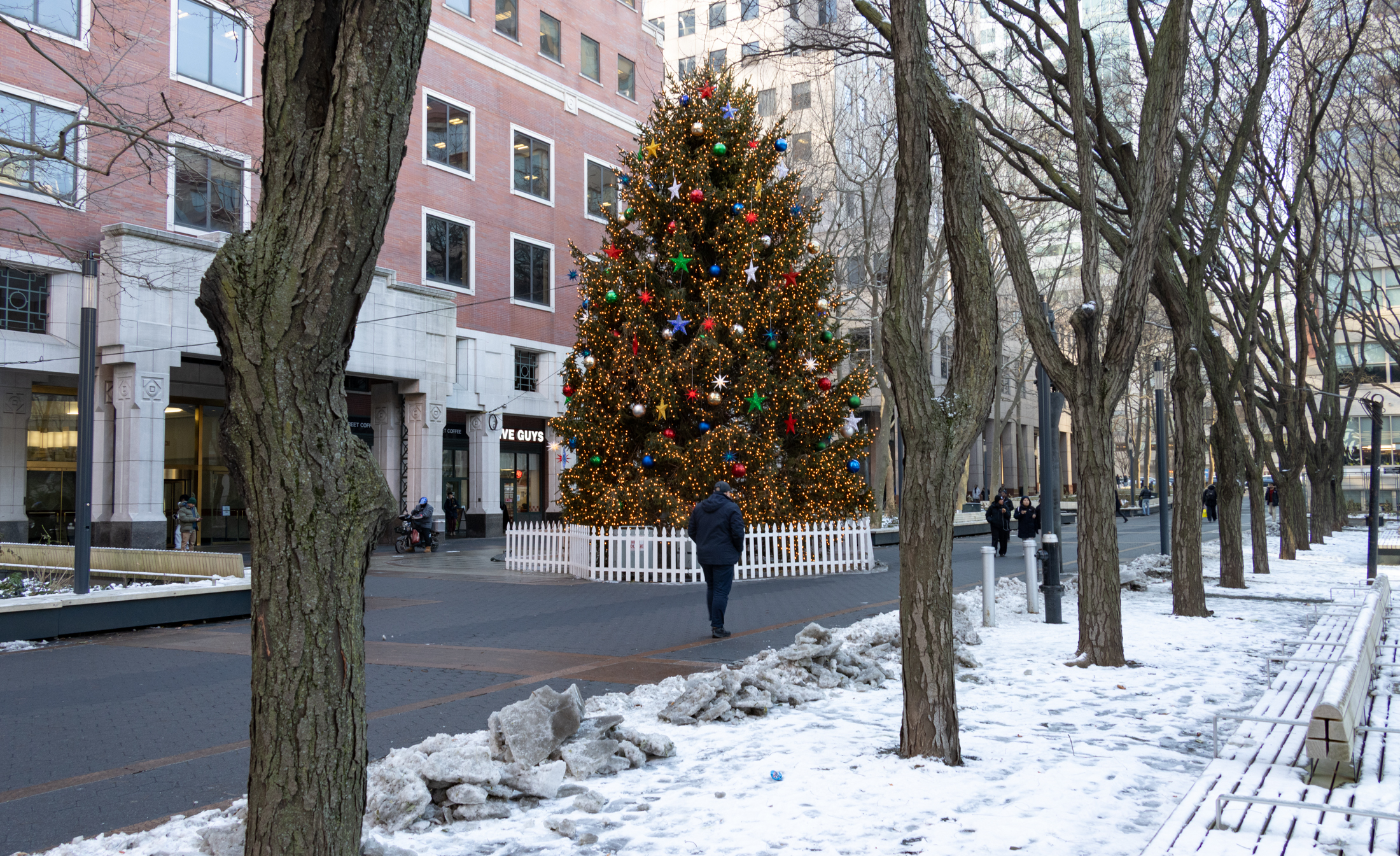The City Spurs Grocery Stores to Underserved
The Bloomberg administration, which has already cut down on trans fats and distributed fruit vendors to produce-anemic neighborhoods, is now seeking to provide incentives for grocery stores to open in areas where most families spend their food budget at bodegas and drug stores. The City Planning Commission unanimously approved the proposal on Wednesday, reports The…


The Bloomberg administration, which has already cut down on trans fats and distributed fruit vendors to produce-anemic neighborhoods, is now seeking to provide incentives for grocery stores to open in areas where most families spend their food budget at bodegas and drug stores. The City Planning Commission unanimously approved the proposal on Wednesday, reports The New York Times, which would grant zoning and tax incentives to grocery stores, with set requirements about how much produce and other foods they sell. The city is eying northern Manhattan, central Brooklyn, the South Bronx, and downtown Jamaica in Queens. Many city officials, food experts, and grocery store executives approve of the plan, meant to spur economic growth in addition to encouraging health (and fighting the rising rates of obesity and diabetes), but the Times mentions a recent report to Congress by the Department of Agriculture that shows an uncertain correlation between obesity and access to healthy, fresh foods. Avi Kaner, a supermarket operator, said education is the main solution. If you force distribution of product to a population that’s not interested in it, or not educated in it, and the grocery stores can’t make a profit, he told the Times, they’ll eventually leave. Check out the Times article for more details about the program, similar programs across the country, and a finer breakdown of the pros and cons.
A Plan to Add Supermarkets to Poor Areas [NY Times]
FRESH Food Store Program Overview [DOCP]
NYC’s Neighborhood Grocery Store and Supermarket Shortage [DOCP]
Photo by Royce Bair





I don’t know if thats true about “Big food”, there’s been a couple of anti-burger movies, there’s a whole anti-hi-fructose corn syrup movement, there are also a number of people calling for soda taxes (though it got shot down in NY state).
I’d agree that dioet can be a taboo subject though.
“I don’t hear anyone telling those enormous agrobusinesses, with their high priced lobbies and pr firms, not to grow and produce corn chips and high fructose snacks and drinks.
Posted by: Montrose Morris at September 24, 2009 10:24 AM”
I agree. Big Tobacco is a sexy and hip thing to hate, but Big Food gets a free pass.
Also, just in general, there is a negative image to staying in and cooking food for yourself, IMO. On Sundays before I go out to have a drink and work on my laptop, I prep some meals for the week.
But weekdays, between the option of meeting up with friends, going on a date, or doing something else, I opt to just buy something and cut corners on my diet. I am blesssed that I can eat pretty much what I want, and I also don’t have a taste for cakes, baked goods, etc., but still: I NEVER go to a green market, although I always get some vegetables when I shop to toss in – when I have/make the time to prep my meals.
Talking about diet is a taboo subject, I’m thinking.
When I was a struggling student we used to make a batch of lentil bolognese each week using marmite to flavor it up.
bxgrl, US asians also have the highest average educational attainment of any racial group according to the last census. I think there are a number of sociological things to be learned from the achievements of US asians as a group.
This is a demand and culture issue and it drives me nuts that so many seem to portray these people and neighborhoods as corporate victims, which just perpetuates the problem. Who doesn’t love an excuse for their poor choices? This is nanny-state policy at its worst.
As others have mentioned, look at all the cheap as hell beautiful produce available in the Chinatowns around the city and other ethnic neighborhoods such as Brighton Beach (not that it seems to keep the Russians healthy). It is insane how cheap great fresh produce can be in those places. Did the city put those markets there? No, there is a strong demand in the neighborhood for that stuff at that price point, and the businesses deliver. Also, even in bodegas, there are all sorts of cheap healthy options like lentils, beans, and pasta. One $1.50 bag of lentils will easily feed a family.
I think its interesting that Chinatown, which has a very large low income population does not have the same obesity problem They use far more vegetables and protein- They manage on low budgets and it would be informative to do some comparing and find out how they manage it.
My limited observation is that in certain relatively poorer neighborhoods there are produce stands on every block. Chinatown was mentioned, and you see the same thing in Caribbean areas of Flatbush and South Asian areas of Kensington. So somehow the market is able to respond to real consumer demand even with the city’s antiquated commercial zoning.
Jester is right. If you are head of a family stretching that $5, you can go farther with pasta, rice, potatoes and a bit of non-prime cut meat than you can with veggies and steak. There is a good reason the peasant cuisines of the world are full of starchy and filling stews and casseroles. It’s called survival.
Growing up pretty poor myself, I remember plenty of meals with rice and beans, and chicken and dumplings made with chicken backs. There is no meat on a chicken back, it was pure flavoring and wishful thinking. We always had vegetables and fruit, even if it was frozen veggies and apples and oranges, but we filled up more on the starches, that’s human nature.
I think it’s great to give supermarkets some incentives and push to come to underserved neighborhoods. I don’t think we need to ban people from buying crap. Adults don’t need a nanny, they need teachers. And like drug trafficing, how about going to the source. I don’t hear anyone telling those enormous agrobusinesses, with their high priced lobbies and pr firms, not to grow and produce corn chips and high fructose snacks and drinks.